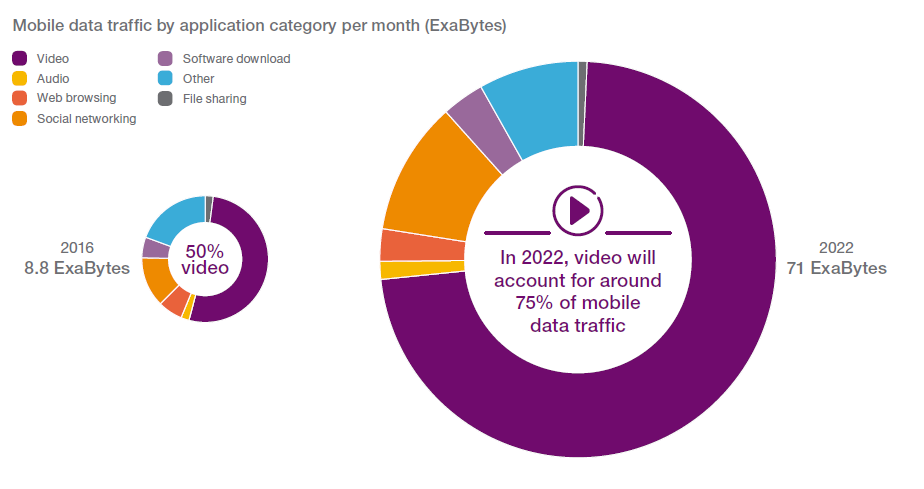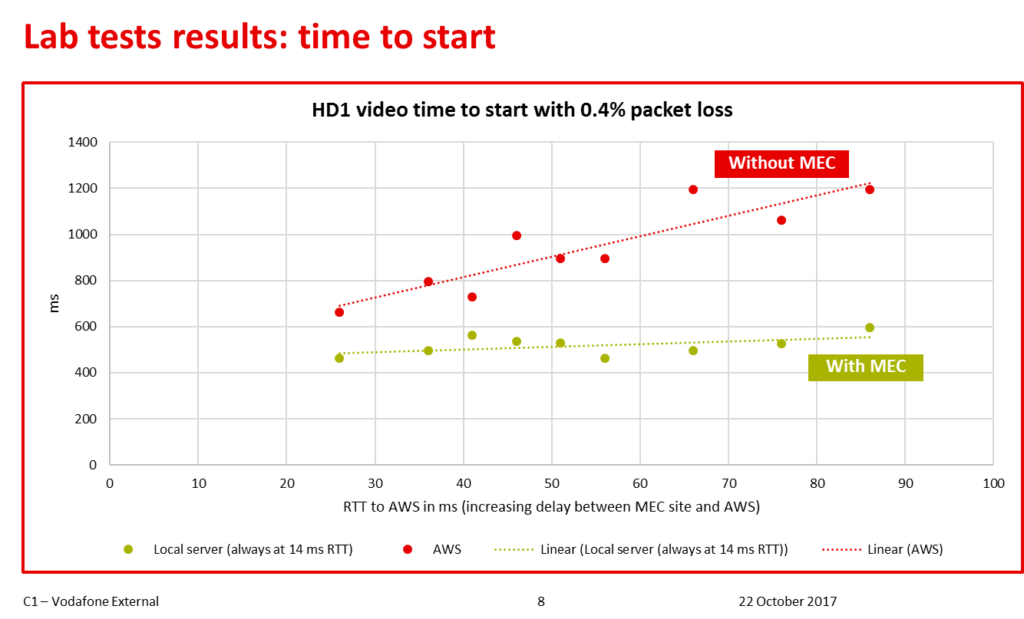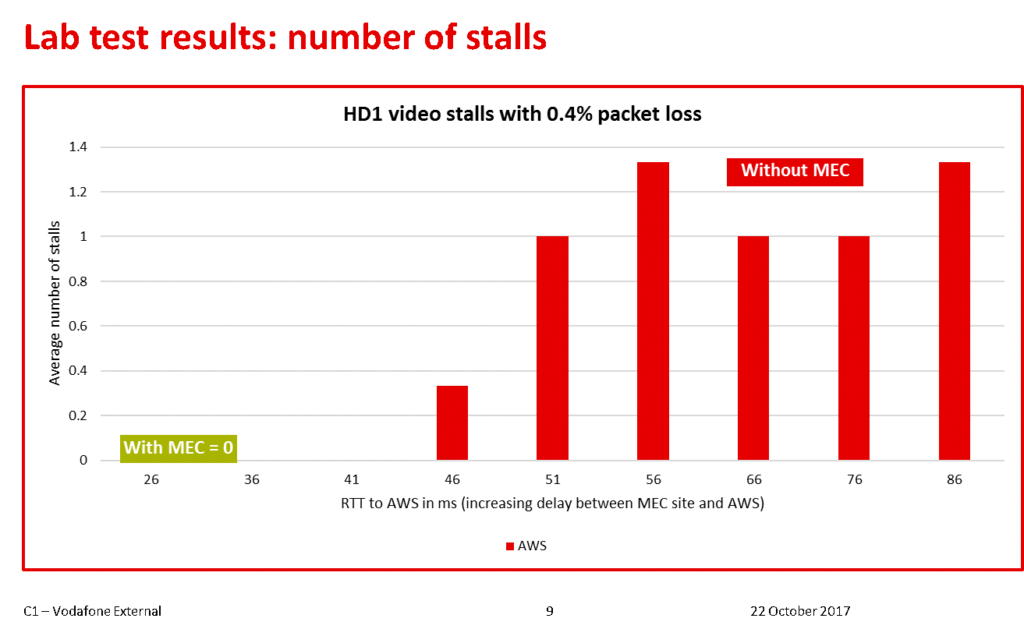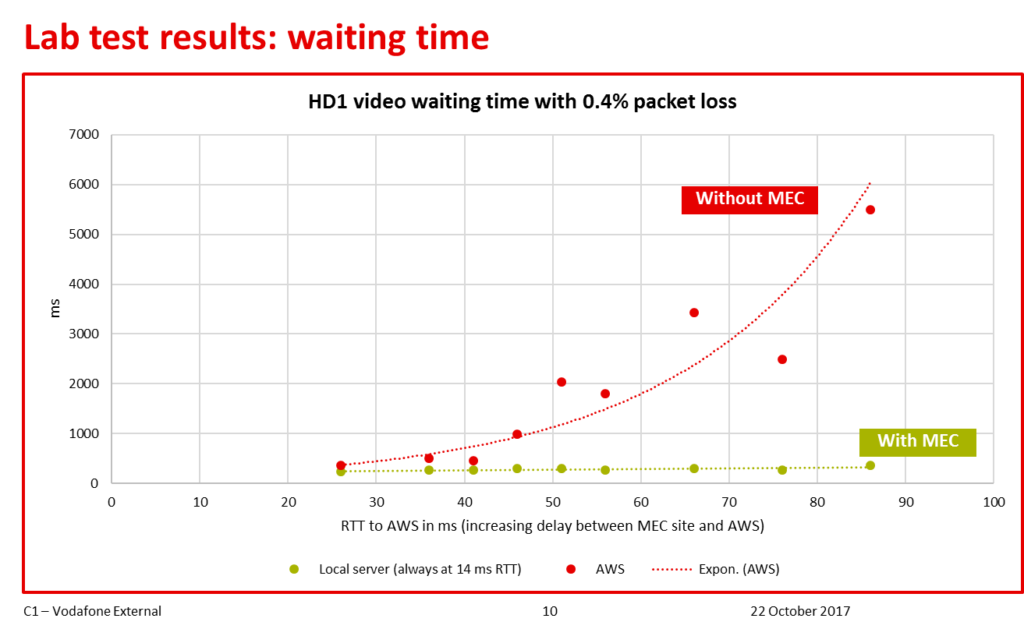Mobile Networks are becoming Video Networks
We all know we are watching a lot of video on our mobile devices. However, the sheer magnitude of this phenomenon really hits home when we look at the numbers. It is then that we realize that more than 50% of mobile traffic today is already video and it’s going to keep growing. By 2022, according to Ericsson Mobility Report, video will account for a whopping 75% of mobile traffic, which translates to approximately 71 Exabytes or an 8-fold increase from 2016.
We can also examine the mobile video trend through another set of numbers; one that highlights the growing role of mobile devices in the world of video. Ooyala indicate that in 2017, for the first time ever, mobile devices overtook desktop computers in video consumption. This puts mobile networks in a challenging leadership position.
Together these numbers clearly depict the transition of mobile networks into video networks.

Video Streaming User Experience – a Sensitive Subject
As mobile networks evolve to become video networks, mobile operators are faced with a daunting task. How to ensure a good Quality of Experience (QoE), while the downpour of video content threatens to overflow their network pipes.
To exacerbate this issue, users are very sensitive when it comes to video streaming. We are easily annoyed by streaming delays to the point of abandoning the service. How easily you may ask? Well MUX.com put the numbers at 39% decrease in the amount of video watched with just one buffering event. That is 4 people out of 10 leaving the service.
Video from the Edge
By now, the importance of video QoE should be clear. As should be the mounting pressure on mobile networks to deliver ever more video. Since today’s mobile networks are limited in their ability to effectively meet these opposing challenges, mobile operators are turning to new technology approaches like Multi-access Edge Computing (MEC).
Here is why
.
What is MEC?
Multi-access Edge Computing (MEC) offers cloud-computing capabilities and an IT environment for applications and services – like video delivery – at the edge of the network close to end users and connected devices. The MEC environment is thus able to provide ultra-low latency with virtually no jitter, which enables smooth broadband video streaming. It is also important to note that MEC is an open, industry standard created by the ETSI MEC ISG and backed by industry leaders.
The basic concept of MEC leverages physical proximity to provide low latency and broadband delivery. However, as we have discussed previously in this post, we need numbers. Especially when strategic investments in a new technology are under consideration. That’s why I am really pleased to be able to present the results and highlights from this joint research project, entitled “Improving Video Streaming Customer Experience with Multi-access Edge Computing”.
Vodafone Research: Improving Video Streaming Customer Experience with Multi-access Edge Computing
Vodafone Group R&D, with partners Saguna Networks and Teragence, set out to measure and quantify the effects of Multi-access Edge Computing on the quality of experience (QoE) for Video Streaming in Vodafone’s lab (read Vodafone’s blog post on this reasearch). The first question that we needed to address, before proceeding with any tests, was “how does one measure QoE?”. For this research, we selected 3 KPIs that can be easily measured and factor highly in QoE.
Here are our 3 QoE KPIs:
- Time to start: the time interval between clicking play and when the video starts playing.
- Number of stalls: a numerical count of how many times the video pauses for re-buffering.
- Waiting time: the total time spent waiting, which is calculated by adding all the re-buffering pauses.
The lab was set up to emulate a mobile network with real network congestion and latency characteristics, simulated at both the core and radio networks. The wireless access was provided via a small cell. Data provided by Teragence was used to model typical latency & congestion levels experienced by mobile users in the UK.
Saguna vEdge MEC platform was located within the backhaul aggregation layer of the Radio Access Network (RAN). It created a local ‘cloudlet’, which was used to operate a virtual video server and stream video directly from the RAN. A second virtual video server was hosted in the cloud on Amazon Web Services (AWS), (see the diagram below). For the tests, identical video assets were streamed from the MEC Cloudlet or the AWS cloud.

The results
Going into this research, we had several hypotheses. We expected the video from the MEC Cloudlet to have a faster time to start than video fetched from the remote server. We also expected the number of stalls to increase as the latency to the remote server increased, while no stalls were anticipated from the MEC-based video. Lastly, we hypothesized that congestion in the radio network will have a greater adverse effect on remote video streaming user experience than for the MEC-based video, where the latency remains constantly low. If our assumption is correct, we would get higher total waiting time as the latency increased and this effect would become more exaggerated in the presence of congestion.
In general, our hypotheses proved correct. However, there were also some interesting results that reveal a great deal about mobile video performance in real networks today and prove MEC’s ability to improve user experience. Let’s review these in more detail one by one.
Time to start
The results for time-to-start were as expected. Longer latency translated directly to a longer time taken for the video stream to start playing. You can see this from the lab test result graph’s straight, sloping red line indicating a linear correlation between time to start and latency to the cloud-based video server. You can also see that the green line, which indicates the results for MEC-based video streaming, remain constant and fast. Since MEC provides an ultra-low latency connection with virtually no jitter, these results were expected.

Number of stalls
Let’s review the results for the number of stalls. There were zero stalls with MEC video streaming. We expected these results from the low latency MEC-based video streaming, when operating in typical network conditions (I provide more information on typical latency & congestion later in this article). We also expected the number of stalls to increase as the latency to the remote server grew – and they did.

Waiting time
The waiting time lab test results are perhaps the most interesting. In this KPI we sum up all the waiting times including time to start and the cumulative sum of all stall events. As you can see in the lab test result graph the total waiting time becomes exponentially worse as latency increases.
The performance of TCP streams used for streaming the video content, suffer from the compounded effect of latency and congestion (packet loss). To ensure “real-world” conditions, Teragence provided baseline packet loss figures typical of real mobile networks. The cumulative effect of congestion (packet loss) and latency greatly exacerbated the waiting time.

What these results mean for customers?
Teragence real-world latency distribution measurements derived from >100k users across four UK mobile operators’ networks were used to analyze the results. Key metrics from Teragence indicate that, while the median round trip time (RTT) is 30-50ms, 1 in 5 people experience 50-70ms RTT. When we consider this information together with our waiting time lab results, you can see that within the 50-70ms RTT range, user experience is badly degraded due to excessive video waiting time. This means that in today’s mobile networks 1 person out of every 5 is having a bad experience streaming video. The graph also indicates that using MEC to stream video content from carefully chosen locations within operators’ RAN aggregation networks can ensure a consistently good user experience for everyone.
Summary
This research provides concrete evidence for the benefits of MEC-based video streaming as a way to minimize the bad user experience, which is currently observed in 20% of cases over today’s 4G networks. MEC offers mobile operators, contending with the delivery of ever more video content, a strategic direction forward. By leveraging this technology, mobile operators’ 4G networks can be transformed into powerful video delivery networks, while simultaneously preparing the network to support the needs of 5G low-latency applications.
There is still work to be done. While care was taken to emulate real network conditions as closely as possible, further video QoE research should be carried out in a live network field trial. The impact of mobility (handovers), different video formats and interworking with different Content Delivery Networks (CDN) networks should also be investigated.
It is also important for us to point out that mobile video streaming is only one of many potential edge computing applications. We hope to see additional initiatives that assess the performance benefits of MEC for a wide range of other applications; from Internet of Things, to augmented reality (AR), connected cars, drone control and more.



One Response
Hi, this is a comment.
To get started with moderating, editing, and deleting comments, please visit the Comments screen in the dashboard.
Commenter avatars come from Gravatar.